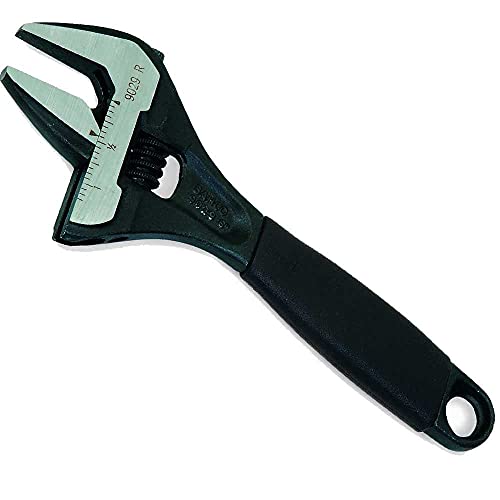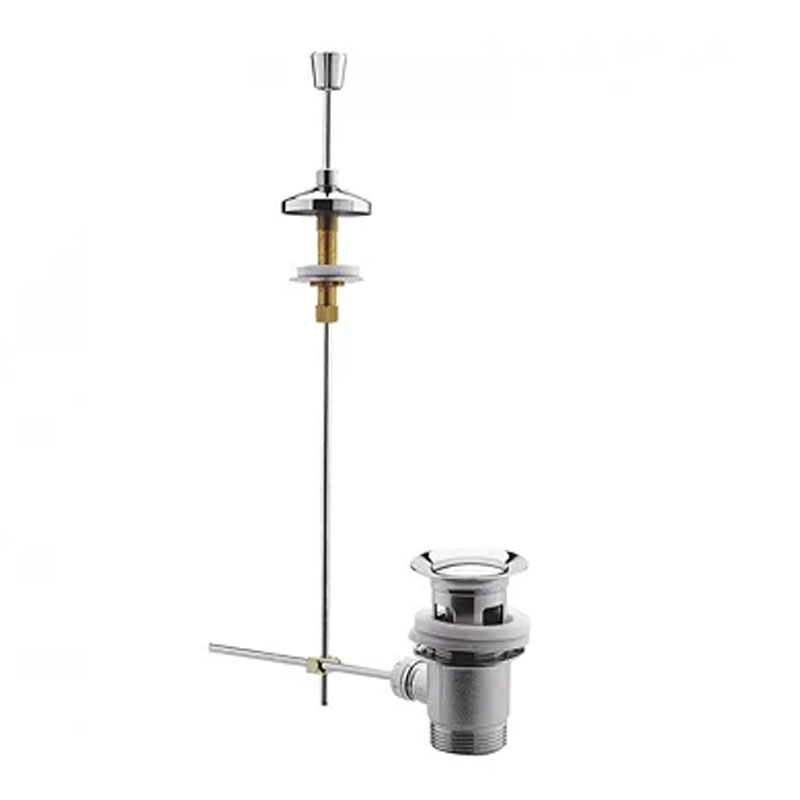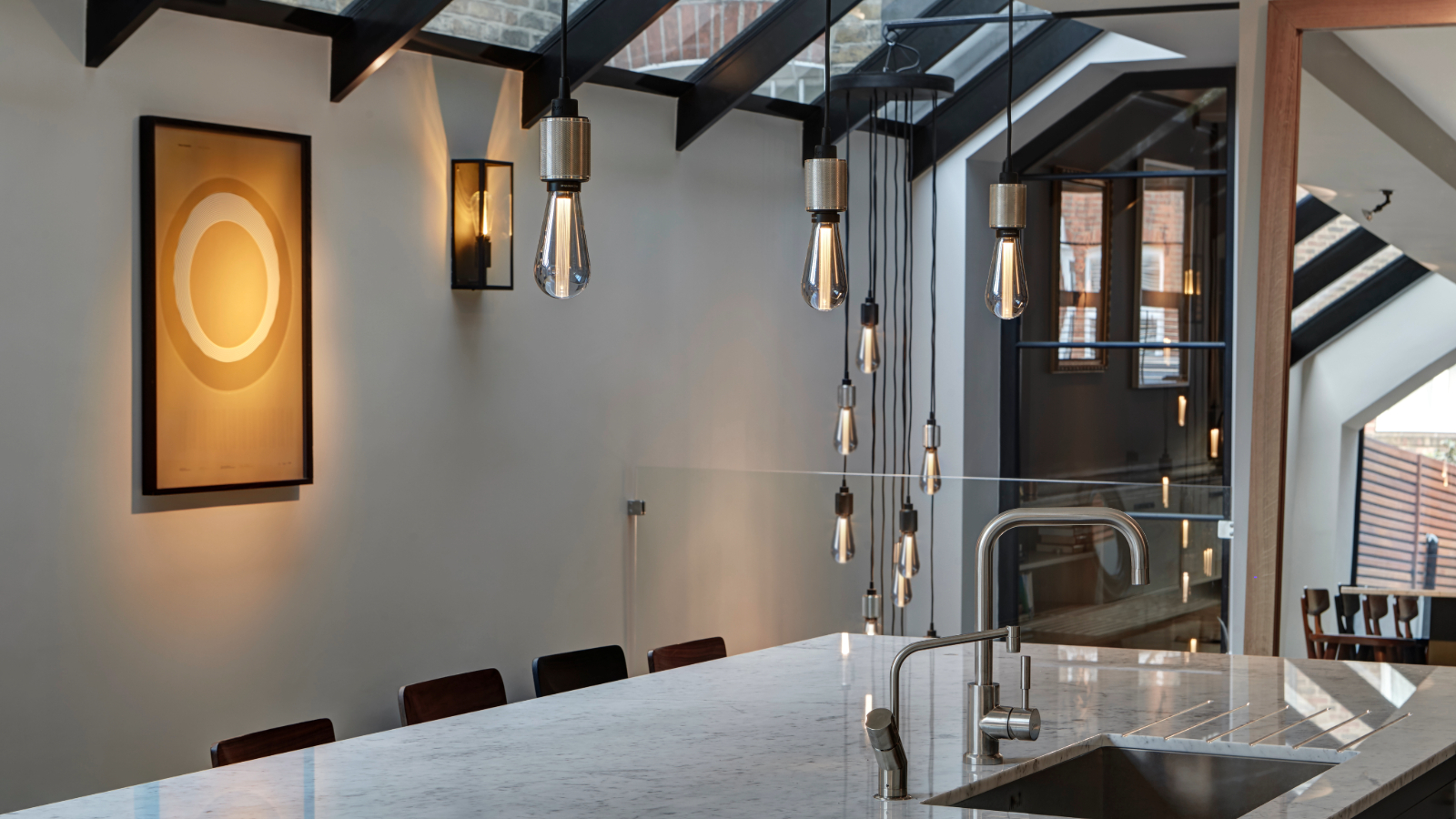This is how to fix a pop up sink plug or replace it — to get your bathroom basin working
Knowing how to fix a pop up sink plug can restore it to its former glory. But it might be time to replace it. Here the pros tell what you need to know

If you are asking yourself: how to fix a pop up sink plug, you have come to the right place. These types of sink plugs have more moving parts than your average everyday plug, so there’s more to go wrong. Even so, thankfully most DIYers will be able to tackle the task of fixing them with a few basic tools and this guide.
And, if a pop up sink plug can’t be repaired, they can be replaced, again on a DIY basis, and the parts are not too expensive. If you do have to replace it, you can make it very much part of your bathroom design.
Here the pros give you the lowdown on why pop up sink plugs go wrong, tips to fix them and how to replace if needed.

Jess Thomas is a well-recognised expert in the drainage and plumbing industry. Jess continually provides valuable insights on a wide range of industry topics, and is dedicated to helping homeowners find effective solutions to their drainage problems.
Reasons why a pop up sink plug breaks
A pop up plug has a few more moving parts than a simple plug so it's more prone to problems. Jess Thomas MD of Drainage Central reveals the issues that can cause a pop up plug to fail, “If your pop-up sink or bath plug is stuck, this can be because the mechanism that sits below the plug is rusted or broken.”
He adds, “It may also be stuck due to a build up of soap scum, debris or mould.” Cleaning a pop up plug every few months is one simple solution to keep it working longer.
Thomas Oldham, Co-founder of UK Construction Blog adds. “In hard water areas limescale from hard water can accumulate around the mechanism, making it harder to operate.”
He goes on to say, “Misaligned or bent components, like the pivot rod, can also cause problems. Applying too much force when using the lever can worsen the issue.”
Bring your dream home to life with expert advice, how to guides and design inspiration. Sign up for our newsletter and get two free tickets to a Homebuilding & Renovating Show near you.

Thomas Oldham has spent the past four years using his expertise of working in the engineering and construction industry for over a decade to develop the UK Construction Blog - a leading online platform dedicated to empowering individuals and businesses in the construction industry.
How to fix a pop up sink plug
When a pop up sink plug needs fixing the common reason is that the stopper has stuck due to a number of reasons. To deal with this and release the plug there are several options as Thomas explains:
1. Pull with your fingers
If you are able to reach it, try to pull up the sink stopper with your fingers. If you cannot use your fingers, try to push a metal nail file or flathead screwdriver between the stopper and the basin to work the stopper back up.
2. Use a suction cup
Provided that the suction cup is smaller than the diameter of the stopper, you can try to use it to pull up the stopper even if the sink is filled with water.
3. Get a plunger
If the sink is full of water, place a plunger over the circle of the sink drain. Apply force in the direction of the drain to force air in, and then push down until the rubber cup is flattened and pulled out. The force of the vacuum seal that this creates should pull the stopper back upwards.
4. Give it a clean
Once a pop up plug has been removed it needs to be cleaned as Oldham shares, “First, clean the stopper thoroughly, soaking it in vinegar or a lime remover.
He adds, “Check the pivot rod under the sink and tighten any loose nuts. If the rod is bent, gently straighten it with pliers.”
Try these to fix or replace a pop up sink plug
How to replace a pop up sink plug
After following the steps to fix a pop up sink plug you may find that the unit may be broken, have misaligned parts or is simply worn out. If this is the case then you need to look at replacing the plug. Here Jess Thomas runs through the process.
1. Remove the old, prepare the new
Before beginning to replace the plug, shut off the water. Then remove the old drain assembly by loosening and removing the P-trap from the branch drain and sink drain using pliers.
Then prepare the new stopper by dissembling the pieces of the pop-up stopper, and unscrew and remove the mounting nut from the drain tailpiece. Install both the plastic and rubber washers, and push them down on top of the mounting nut.
2. Apply sealant
Start by applying a thin layer of pipe joint compound – like this EVO-STIK Plumber's Mait from Amazon to the rubber washer that will be fitting against the sink. This is optional, but it can be harder to get the rubber to seal without using it.
Next, apply a large bead of plumber's putty to the underside of the flange on the sink drain ring. You can also use silicone caulk, but some assemblies may have a foam or rubber gasket that can be used instead of putty.
3. Connect and tighten
Push the pop up piece through the drain opening from under the sink. While holding the piece in place, fit the drain ring into the opening from above the sink, and thread this onto the drain piece as far as possible by hand.
Now tighten the assembly under the sink. Hold the drain tailpiece still with one hand and tighten the mounting nut upwards. The opening in the tailpiece should be pointed straight toward the back wall.
Then, tighten the mounting nut with pliers while holding the tailpiece in place. Avoid over-tightening the nut, only secure it so that the assembly will not spin around in the drain opening.
4. Put the stopper back
This step is for pop up sink plugs that have a pivot/pull rod like this Chrome Bathroom Basin Push Pull Rod Lever Pop Up Plug from Amazon. Now insert the pop-up stopper into the drain opening, with the linkage hole facing towards the back of the sink.
Insert the pivot rod into the opening on the side of the tailpiece, and test and tighten the nut. Finally connect the pop up lever and pivot rod, adjust and test. If you have a click clack pop up plug – like this Hibbent Pop up Sink Plug from Amazon – simply screw the plug unit into the drain cover and test.
5. Reassemble the drain trap
Finally reconnect the P-trap to the drainpipe and tailpiece. Close the stopper and fill up the sink, before opening the stopper again and checking underneath the sink for leaks while the water drains out.
FAQs
How much does a pro charge to replace a pop-up sink plug?
If fixing or replacing a pop up sink plug is beyond your DIY skills or you simply don’t have the time, calling in a pro is a wise move. Jess Thomas points out, “The average plumber will have an hourly rate of roughly £50, but this may cost more if the plumber offers to source any replacement parts on your behalf.”
As a general guideline for replacing a pop up sink plug Thomas Oldham says, “Professional repairs typically cost between £100 and £150.”
Why does a pop-up sink plug not hold water properly?
A pop up plug needs to sit tight against the drain cover, if it doesn't it can cause problems as Thomas reveals, “If a pop-up sink plug is not holding the water in your sink properly, this can be because the stopper is not sitting securely over the drain, or there could be a leak caused by the stopper gasket.”
He adds, “If this is happening, you should try adjusting the stopper level to see if this helps the stopper create a seal to hold water in the sink." If this doesn't work you should try replacing the gasket.
A new plug can be very much part of a bathroom makeover. Check out our bathroom design ideas, modern bathroom ideas and bathroom tile ideas for small bathrooms for inspiration and ideas.
Steve Jenkins is a freelance content creator with over two decades of experience working in digital and print and was previously the DIY content editor for Homebuilding & Renovating.
He is a keen DIYer with over 20 years of experience in transforming and renovating the many homes he has lived in. He specialises in painting and decorating, but has a wide range of skills gleaned from working in the building trade for around 10 years and spending time at night school learning how to plaster and plumb.
He has fitted kitchens, tiled bathrooms and kitchens, laid many floors, built partition walls, plastered walls, plumbed in bathrooms, worked on loft conversions and much more. And when he's not sure how to tackle a DIY project he has a wide network of friends – including plumbers, gas engineers, tilers, carpenters, painters and decorators, electricians and builders – in the trade to call upon.




